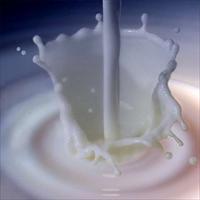Vigilance needed to ensure safe infant food

WHO and FAO alert countries to possible spread of melamine-contaminated dairy products
WHO and the UN Food and Agriculture Organization (FAO) are urging affected countries to ensure safe feeding of millions of infants following the ongoing melamine-contaminated milk crisis in China. The two agencies also call on countries to be alert to the possible spread of melamine-contaminated dairy products.
"While breastfeeding is the ideal way of providing infants with the nutrients they need for healthy growth and development, it is also critical to ensure that there is an adequate supply of safe powdered infant formula to meet the needs of infants who are not breastfed," said Dr Jørgen Schlundt, Director of the WHO Food Safety Department.
Replacing powdered infant formula with other products such as condensed milk, honey mixed with milk, or fresh milk is inappropriate as such products would put at risk the safety and nutritional status of this vulnerable population group, the two agencies advised.
"Restoring consumer confidence is critical. Melamine-contaminated products should be removed from the food chain in order to prevent further exposure. The safe supply of dairy products needs to be restored immediately,” said Dr Ezzeddine Boutrif, Director of the FAO Nutrition and Consumer Protection Division.
Safe feeding for infants
WHO recommends that all infants should be fed exclusively with breast milk for the first six months of life. No other liquid or food, not even water, is needed during this period. Thereafter, infants should receive adequate and safe complementary foods while breastfeeding continues up to two years of age and beyond.
Following reports of findings of imported melamine-contaminated products in several countries over the last two weeks, countries should closely monitor their markets. The two agencies highlighted that melamine-contaminated products could reach markets in other countries through both formal and informal trade. Getting information about the origin of the product, up-to-date recall information or in some cases testing for melamine contamination might be considered. If found contaminated, appropriate actions such as product recall and safe disposal should be taken, based on an assessment of the risk to human health.
Safe supply of food critical
Food safety is not the sole responsibility of public authorities. The food industry is also responsible for ensuring a safe supply of food to the consumer. “It is critical that the industry strongly invests in food safety and adopts a food safety culture covering the food chain from raw materials through to the final product,” said Dr Boutrif.
Incidents such as melamine contamination in China not only impact food safety and human health but also put the livelihoods of hundreds of millions of dairy farmers at risk. "There is a need for countries to do major investment in strengthening their food control and food-borne disease surveillance systems as it could minimize the potential occurrence of food safety incidents like this one," said Dr Schlundt.
The melamine-contaminated dairy products event first came to the attention of the international organizations on 11 September. Both WHO and FAO have used the International Food Safety Authorities Network (INFOSAN) to inform and update national food safety authorities on this crisis, one of the largest in recent years.
Over 54 000 children have sought medical treatment in China after drinking melamine-contaminated infant formula. Almost 12 900 are currently hospitalized.
Melamine is commonly used in food contact materials (e.g. containers, labels, etc.) and can also be used in agriculture production such as fertilizer. Whether this has a potential for carry-over into food at low concentrations (usually in the range of microgram per kilogram) and further impact on human health may need further evaluation.
Melamine on its own is of low toxicity. But animal studies have suggested that kidney problems occur when melamine is present in combination with cyanuric acid, a potential impurity of melamine. The level of melamine found in the contaminated infant formula has been as high as 2,560 miligram per kilogram of food, while the level of cyanuric acid is unknown.
 Back and Next - Back and Next
Back and Next - Back and Next See Also - See Also
See Also - See Also